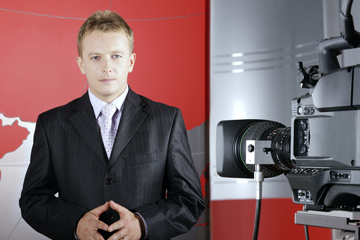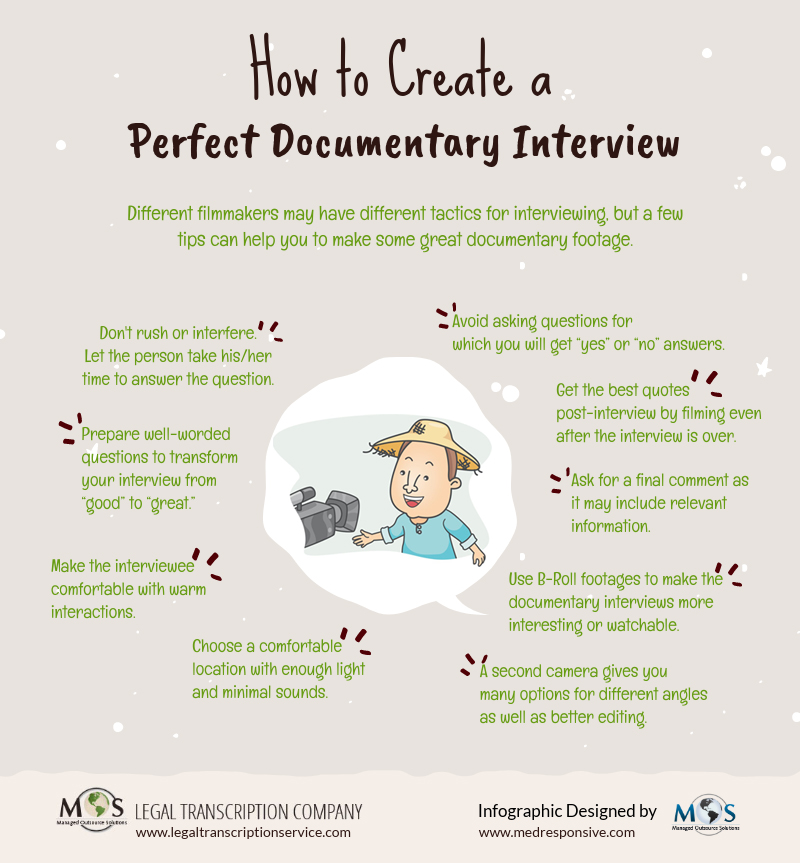
Interview types that can be added to your documentary films include expert interviews where an expert could be asked to talk about a subject to provide factual information, sit-down interviews, in which you can tell the viewer who the subject is and introduce a theme, and interviews within a scene that involve talking to a subject while they’re in action.
Tips to Consider When Interviewing Someone for a Documentary
- Research what to ask – Before sitting for an interview, make sure you perform a wide research and know what you want each of your participants to talk about. Choose 5-10 types of questions that will make them give you the information you’re looking for. Being prepared helps you to be less nervous. Also, think of the time the interviewee can spend with you and choose pointed, structured questions.
- Avoid asking “yes/no” questions – Prepare questions in such a way that you won’t get “yes” or “no” answers. For example, instead of asking “Are you frustrated with that incident?” ask
“You must have been frustrated with the incident.” - Consider spontaneous questions too – Even though questions are prepared, choose to ask spontaneous questions, if the interviewee discusses anything interesting or unexpected. At times, even unplanned questions & answers can make the session informative, interactive and interesting.
- Listen and maintain eye contact with your subject – Avoid interrupting, while the interviewee is talking. Other than asking the question; avoid making any sounds like non-verbal noises (“hmmm” or gasping) while listening to your subject. You can also ask easy questions to warm them up and make them comfortable. If the person is not that familiar to you, it’s good to build a good rapport before you start firing questions.
- Choose a proper location – Make sure to conduct the interview in a safe and familiar environment. You can even choose to shoot a good interview outside in an interesting and appropriate location by using a wireless microphone. If the interviewer is not included in the documentary film, your questions need not be heard. This can be done perfectly by teaching the subject how to incorporate the question into the answer.
- Natural lighting – Shooting in natural light is a trend in film making now. If shooting in a room with windows, placing the camera adjacent to the window provides more of a sidelight. Natural lighting from the window can avoid blow-out! Also, pay attention to color and emotion.
- Multiple cameras – It is ideal for most projects to have two different camera angles that will give you additional options in editing. It also serves as a backup in case anything goes wrong with your main camera. With three cameras, you would be able to ensure maximum coverage with the flexibility of many angles and creative compositions.
- Use B-Roll – B-Roll footages can be used in documentary interviews to make the session more interesting or watchable. You can use the videos of the interviewee’s daily routines, interaction with families, their hobbies, stock footage or even images to fill in gaps.
- Continue filming even when the interview is “over” – It has been said that often the best shots can be taken post-interview, as the interviewee will be more relaxed. In such a mood, more conversations may happen. Make sure that the camera is rolling even if you have finished asking questions.
- Ask for final comment – At the end of the interview, don’t forget to ask the person for any final thoughts. Ask them whether there’s something they wanted to discuss, which may bring out some important information that you hadn’t included in the session.
When you are busy with your shooting schedule, you may not be able to convert these interview videos or audio content into text. In such cases, comprehensive documentary interview transcription services offered by experienced transcription firms would help ensure quality, user-friendly transcripts of these interviews.


